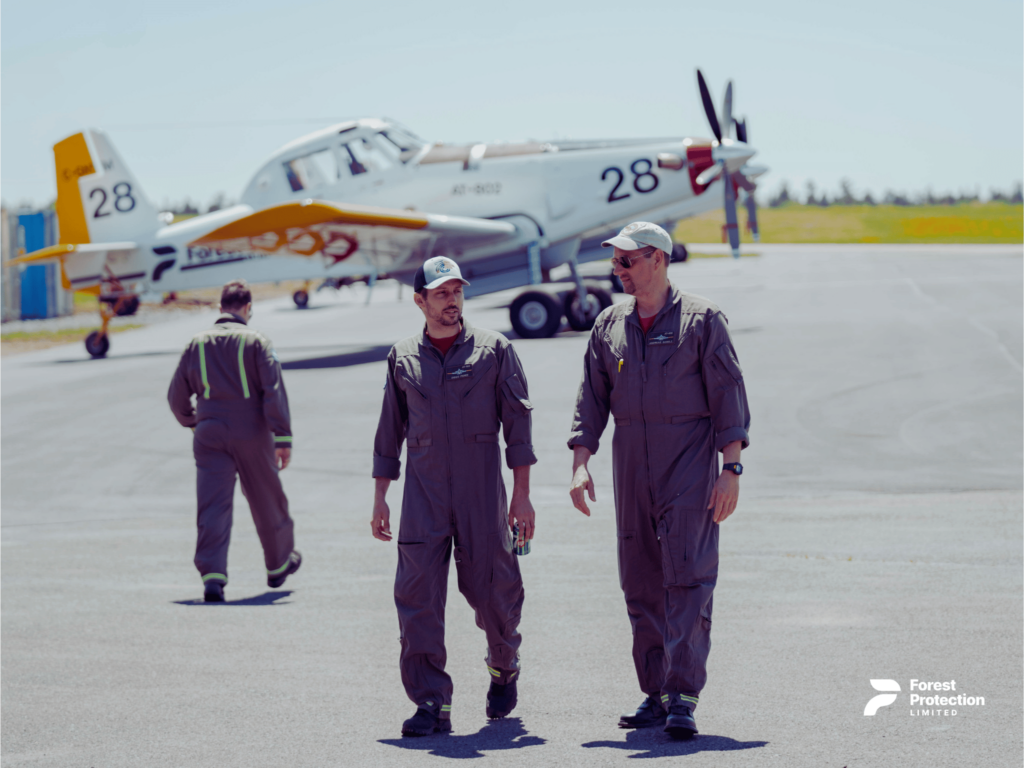Imagine a sprawling forest landscape, lush with greenery and filled with wildlife. This serene setting is treasured by many, but its beauty can be threatened by an unexpected disaster – wildfires. While traditional methods are essential, tapping into aerial firefighting is the best defence to minimize the damage from the destructive power of wildfires.
Unleashing the Power of Fire Suppression
When it comes to combating wildfires, time is of the essence. A quick initial response makes all the difference between containment and uncontrolled destruction. Aerial firefighting provides a rapid mobilization and efficient method of fire suppression. With specialized aircraft like Air Tractor AT-802 fixed-wing planes equipped with water, foam and long-term retardant delivery systems, aerial firefighters can attack flames from above, directly targeting hotspots and minimizing the spread.
This approach is beneficial in inaccessible or rugged terrain where ground crews face challenges in reaching the heart of the fire. Using aerial firefighting techniques, ground crew gain a valuable tool enhancing their ability to subdue wildfires rapidly.
The Essential Role of Skillful Pilots
Skilled pilots are the unsung heroes behind every successful aerial firefighting operation. They navigate through dangerous conditions and make split-second decisions that can determine the success or failure of the mission. Their expertise is crucial for the precise drop of water, foam or retardant in targeted areas while avoiding potential hazards such as power lines or rugged terrain.
The expertise of skilled pilots is integral to executing aerial firefighting missions seamlessly. Pilots undergo specialized training on wildfire behaviour, understanding wind patterns, and effective firefighting techniques. They can adapt dynamically to changing situations to ensure that resources are utilized optimally. Moreover, air crews often collaborate closely with ground crews, sharing critical information and working together to achieve the desired outcome.
Long-Term Retardant: A Strategic Defense Mechanism
Using aerial resources, we can deploy long-term retardant and gain a powerful tool against the destruction caused by wildfires.
Fire retardants play a crucial role in supporting ground crews during wildfires. It slows the fire’s spread, buying valuable time for ground firefighting efforts to create firebreaks and establish defensive lines. Combined with other firefighting tactics, it significantly contributes to successfully containing and extinguishing wildfires.
Fire retardants are unique in interrupting the chemical reactions that sustain combustion. It provides long-lasting protection by forming a continuous protective barrier against wildfires and industrial fires. It helps reduce water damage in locations where moisture could be harmful, such as homes, libraries, museums, or data centers.
Protecting Forests While Safeguarding Communities
Aerial firefighting is not solely focused on suppressing fires but also emphasizes the importance of forest protection. By proactively managing forests and ensuring their overall health, we can prevent the rapid spread of wildfires and reduce their intensity.
Aerial surveys can identify areas at risk of fire outbreaks. These assessments enable proactive measures to reduce fuel loads and create fire-resistant landscapes. Skilled pilots play a vital role in effectively managing forests and minimizing the impact of wildfires on natural habitats and nearby communities.
By embracing fire suppression techniques and tapping into the power of aerial firefighting, we can protect our forests and communities from the devastating effects of wildfires.
Learn more
- Fire Retardant vs. Water: Choosing the Right Fire Suppression Method
- Winning the Battle Against Wildfires
- Video: Onboard with FPL

